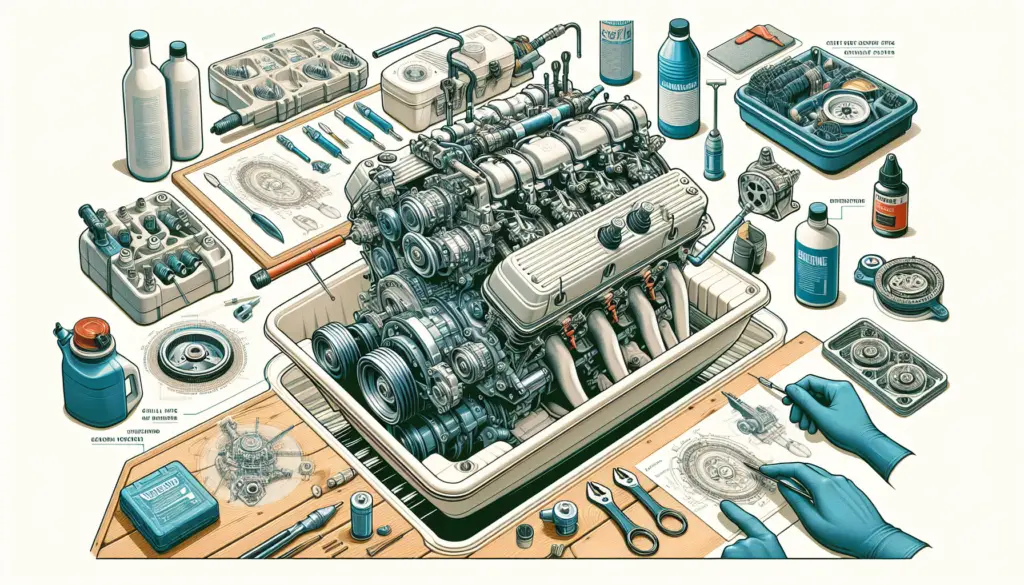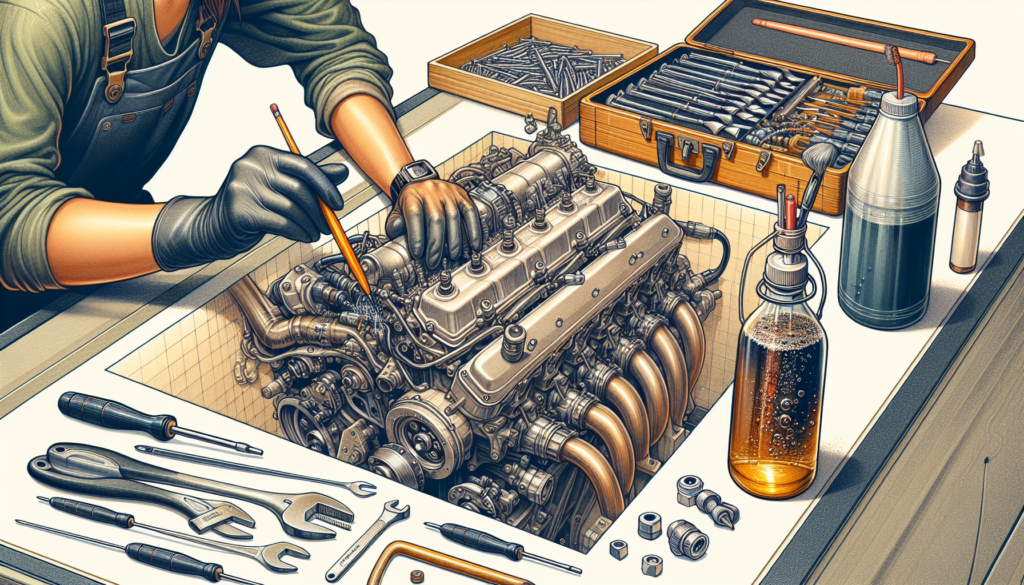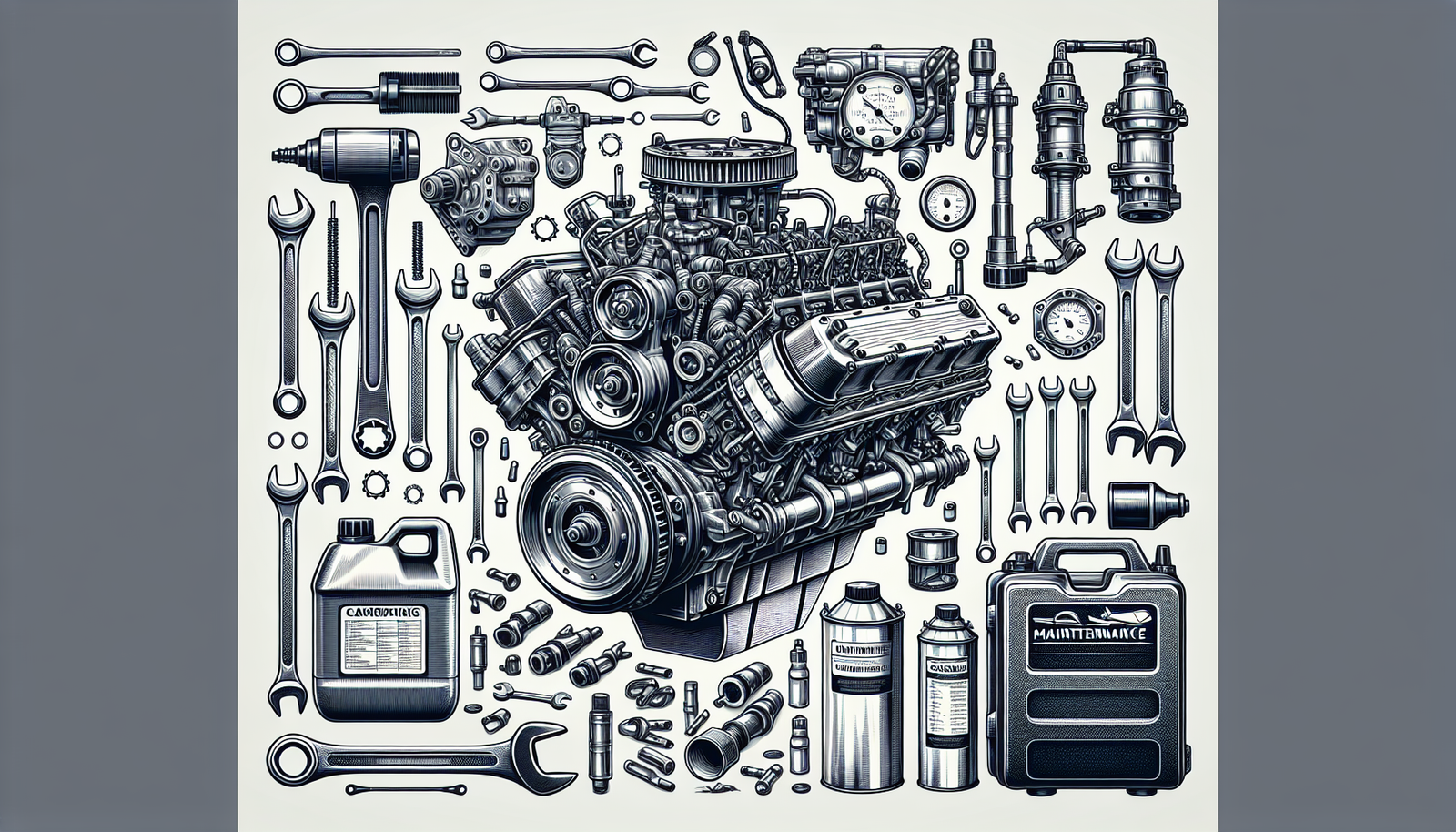Your dream of skipping along the water’s surface in your own boat has finally come true. But owning a boat is just the beginning, stepping up your game to understanding its machinery is the real deal. Read on as “A Beginner’s Guide to Properly Operating and Maintaining a Boat Engine” takes you on an engaging and insightful ride. This guide serves as a comprehensive resource in teaching you the ropes of engine operation and maintenance. From starting the engine to keeping it in excellent working condition, this article is your go-to aid that unravels the world of marine engines.
Understanding Your Boat Engine’s Basics
Navigating the waters can be a thrilling experience, but it’s not all about the wind in your hair and the smell of sea salt. It’s crucial to understand your boat engine’s mechanics. Grasping the basics of your boat’s engine will not only enhance your overall boating experience but will also work wonders for your maritime safety.
Different types of boat engines
There are several types of boat engines you might encounter, but the most common ones are outboard, inboard, and stern drives. Outboard engines are versatile and often used on small boats. Inboard engines, on the other hand, are built into the boat and are generally found in larger vessels. Lastly, stern drives are a combination of the inboard and outboard engines. Understanding your engine type will help you maintain and diagnose any future issues.
Basic components of a boat engine
In its simplest form, a boat engine consists of several key components you should be familiar with. These parts include the engine block, cylinders, pistons, connecting rods, crankshaft, and timing belt – among others. This may sound too technical, but don’t worry! With time and experience, you’ll become quite familiar with these terms.
The function of each part in a boat engine
Each component of a boat engine plays a critical role in its operation. The engine block houses most of the engine’s components, while the cylinders serve as a space where the pistons move up and down. The connecting rods link the pistons to the crankshaft, converting their linear movement into rotation. Lastly, the timing belt synchronizes the rotation of the crankshaft and the camshaft, allowing for proper engine function. Knowledge of these mechanisms will help you identify issues should they arise.
Pre-Departure Check
Just as you wouldn’t drive a car without ensuring it’s in tip-top shape, the same goes for a boat. Carrying out a pre-departure checklist can save you from potential trouble on the water.
Checking oil levels
Keeping an eye on your engine’s oil level is crucial. Without adequate oil, your engine could become damaged. It’s best to check the oil every time before you embark.
Inspecting the fuel system
Your fuel system is what propels your engine, so it’s worth giving it some attention. Look for leaks, damages, or any loose fittings.
Ensuring cooling system is in order
The cooling system keeps your engine from overheating. Ensure the coolant level is sufficient, and look for potential leaks.
Verification of electrical systems
Your electrical system powers everything from your lights to your fuel system. Check that your batteries are fully charged and that all connections are secure.

Engine Starting Procedures
A smooth engine start is mostly about knowing what steps to take and in what order.
Safety measures before starting the engine
For safety reasons, ensure that all gears are in neutral, check for leaks or loose wires, and maintain a safe distance from the engine when starting.
Engine ignition process
Turn the key or press the ignition button, but if your boat is older, you might have to employ the choke. If the engine doesn’t start, don’t repeat too often or you risk flooding it.
Understanding and managing cold and warm engine starting processes
If the engine is cold, you might need to let it warm up for a bit before setting off. If the engine has been running, you can usually start it up without a warm-up period.
Proper Engine Operation
How you operate your engine can greatly impact its longevity.
Acceleration and shifting techniques
Smooth and gradual are your keywords here. Abrupt shifts can be damaging to your engine.
Engine cooling system operation
Keep an eye on the temperature gauge to ensure your cooling system is working properly and the engine isn’t overheating.
Monitoring fuel flow rates
Understanding and monitoring your fuel flow rate will help you to manage your trips and fuel economy better.

In-Trip Maintenance Recommendations
Being prepared to handle minor problems on the water is key to a safe and enjoyable trip.
Routine inspections while on the water
Keep an eye on your gauges, listen for unusual noises, and inspect your engine periodically.
Resolving minor engine issues mid-trip
From overheating to low oil pressure, knowing the basic troubleshooting process can get you back on track without stressing.
When to turn back due to engine problems
Recognize when an issue is too large to handle on your own and know when it’s time to head back to shore.
Fuel Maintenance
Proper fuel maintenance can prolong engine life and ensure your boat stays in good running shape.
Selecting the right fuel for your engine
Using the correct fuel for your engine type is crucial to the long-term health and performance of the engine.
Avoiding fuel contamination
Avoid contamination by regularly cleaning fuel containers and using fuel stabilizers.
Fuel filter maintenance
Regularly check and replace fuel filters to keep your engine running smoothly.

Oil Change and Maintenance
Your boat’s engine oil plays a vital role in keeping things running smoothly.
Recommended oil change intervals
Regular oil changes are an essential part of boat maintenance – typically, every 100 hours of use or once a year.
Selecting the right oil for your engine
Understanding the correct oil to use for your type of engine can increase efficiency and prolong the engine’s lifespan.
Proper oil change process
Knowing the steps involved in changing your boat’s engine oil can save you time and money in the long run.
Oil filter maintenance
Just like the oil itself, your oil filter should be replaced regularly, as it plays a crucial role in maintaining your engine’s overall health.
Maintaining the Cooling System
A functioning cooling system is vital for a trouble-free boat trip.
Importance of the cooling system
The cooling system prevents your engine from overheating, enabling smooth operation.
Regular coolant level checks
Regular checks on the coolant level ensure the cooling system functions properly.
Recognizing common cooling system issues
Being aware of signs of a faulty cooling system can save you from a potential breakdown.
Battery Maintenance and Troubleshooting
The power source of your boat’s electrical system needs particular care to ensure an uninterrupted sailing experience.
Routine battery checks
Regular battery checks are essential to ensure they are charged and are in good working condition.
Understanding common battery issues
Being familiar with typical battery issues, such as corrosion or unexpected power drains, can help you troubleshoot effectively.
Proper battery storage during off-season
Proper battery storage in the off-season prolongs the battery life. This means disconnecting, cleaning and storing it in a cool, dry place.
Post-Trip Engine Maintenance and Care
Maintenance doesn’t end when your trip does. Post-trip maintenance is all about preventive measures to prolong engine life.
Cleaning the engine after use
After each trip, you should clean the engine to remove any salt, dirt, or grime to prevent corrosion.
Draining and winterizing the engine
If your boat will be idle during the cold season, it’s essential to drain and winterize the engine to avoid freezing damage.
Long-term storage tips
Proper long-term storage protects your engine’s parts from corroding and promotes smooth operation when she’s back in action.

